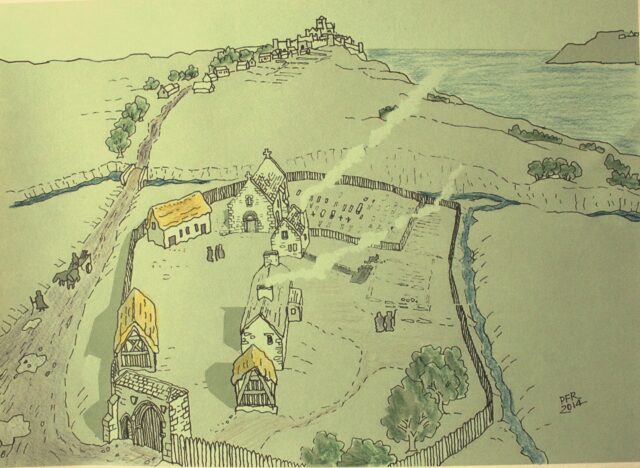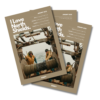Hi, I’m Mike Coates, born in North Shields and proud of my family roots in our town. I’ve always given my address as Northumberland as I couldn’t accept a place called Tyne and Wear! My childhood was spent in Northumberland Park where both my grandfathers played bowls, and so I developed an interest in the Pow Burn which had created the Spital Dene.
I had traced my family back to the 1200’s but it was not until after retirement when I was invited to became a volunteer at the Old Low Light Heritage Centre, almost ten years ago, that I began to explore the story of the Pow Burn, it’s importance in the origin of North Shields and St Leonard’s Leper Hospital.
I have now written, published and sold 1000’s of books about the history of our town but with the interest in NS800 I have decided to re-issue The Pow Burn book which had sold out. Included, as well as the chapters on the history and regeneration of Northumberland Park and the only published account of St Leonard’s Hospital, is an expanded chapter on the origin of Shields.
I was extremely privileged to help organise the three year archaeological investigation of St Leonard’s to discover its secrets hidden beneath the park.
Medieval hospitals were commonly situated close to bridges which had important symbolic religious connotations so residents of the hospital could collect alms from all those crossing.
Spital Dene derived its name from St. Leonard’s Hospital which was first referred to in an assize roll of 1293 which mentions “the bridge of the hospital of St Leonard”.
The bridge was on the main road from Newcastle to Tynemouth and is beneath the present King Edward Road. Situated on the only road to Tynemouth where the Prior of Tynemouth held markets on Sundays from 1275 meant there would be many people travelling across the Spital Bridge.
In ‘Medieval Religious Houses, England and Wales’ (Knowles and Hadcock 1971) it is suggested that the hospital was founded before 1220.
However in 1110 Tynemouth Monastery was rebuilt following its destruction in 1095 by William Rufus, the son of William the Conqueror. It seems reasonable then to conclude that the accomplished stone masons engaged at Tynemouth Monastery at this time were also responsible for the building of the St Leonard’s Hospital Church. We uncovered stonework of the west church door, identified as early 12th century reinforcing this theory. There is also evidence of an earlier church building at this site. Uncovered were high status, cream, brown and green medieval floor tiles of the church floor proving this was an impressive church. Also about 80 skeletons were revealed some of which proved to have suffered from Leprosy
Prior to the archaeological investigation of the site we had little idea of its size or status. Now having uncovered the foundations of the church, elaborate carved stonework, substantial roof tiles, evidence of leaded windows, tiled flooring, pottery and metal finds, we can build up a picture of what this impressive high status church, probably visible from the mouth of the Tyne and Tynemouth Priory, looked like 800 years ago. Below is the Archaeologist Peter Ryder’s impression of how the site may have looked with Tynemouth Priory in the distance and the Newcastle road crossing the Pow Burn by the Spital Bridge over the Pow Burn.
The site which is to be registered as a scheduled ancient monument has now been mothballed awaiting further funding to preserve the remains and will be a fantastic feature of the park.

































